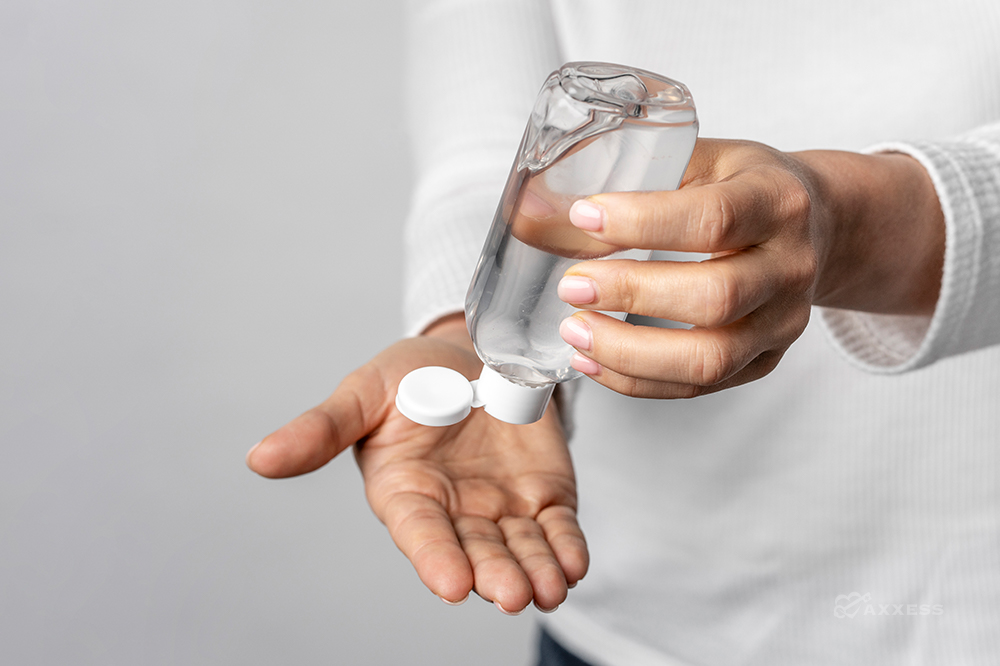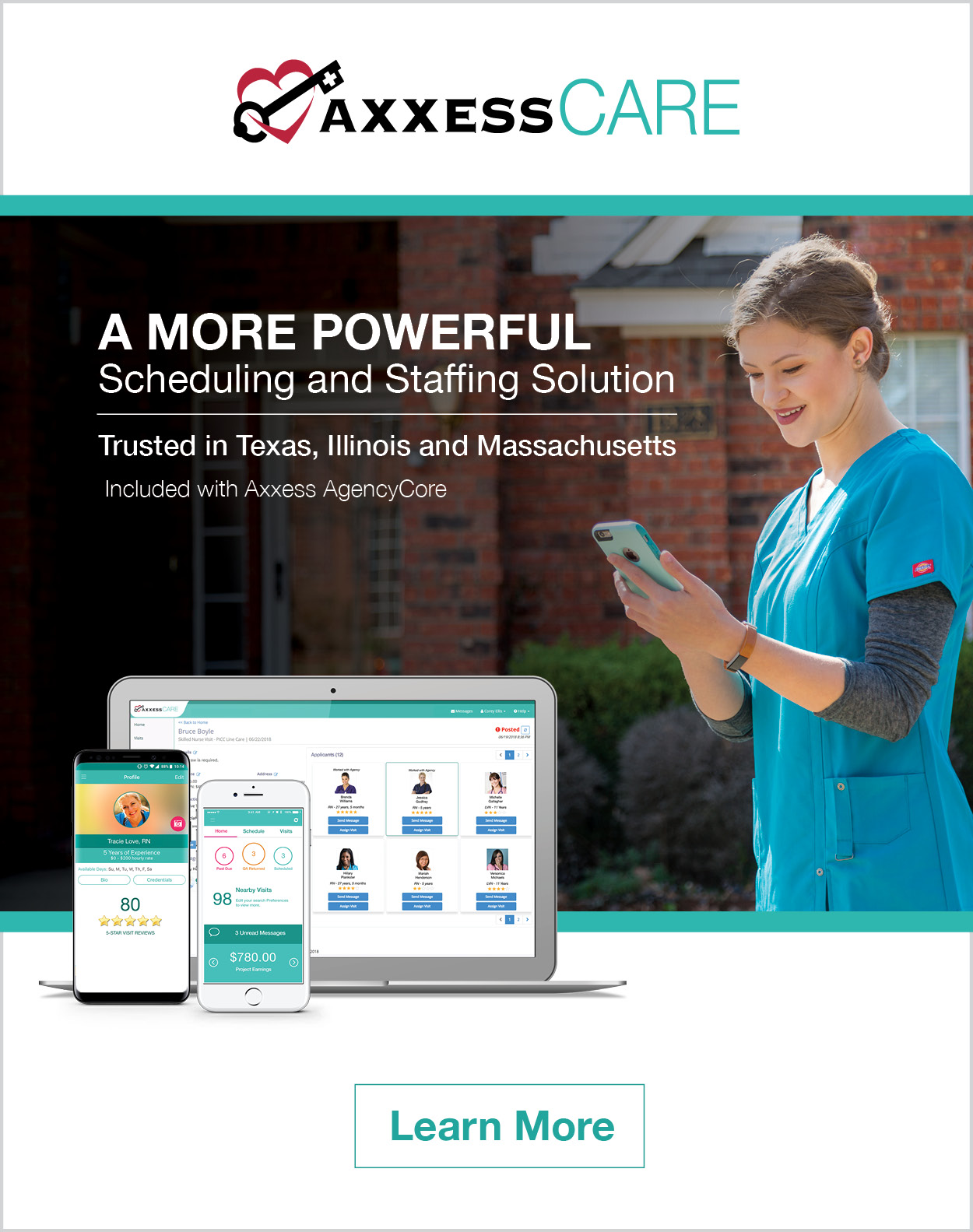
The coronavirus (COVID-19) is a contagious disease spreading throughout the population. Currently, there is no vaccine or specific treatment for COVID-19. Therefore, education on how to manage care safely is paramount. The Centers for Disease Control and Prevention (CDC) has given guidance for implementing home care for those with the coronavirus disease that do not require hospitalization. Below are some tips for healthcare professionals who will perform visits and be in close contact with persons who have COVID-19.
Screen for Risk Levels
Agencies will need to screen patients and employees to keep track of risk levels and identified infections to assist with patient care planning and prevent transmission. Axxess has created a COVID-19 Screening Tool and an Infectious Disease Profile for both patients and employees, to assist agencies with this step. Caregivers will need to be vigilant in preventive techniques during their visits.
Protect Your Supplies
Use the correct bag techniques. Since the virus can live on surfaces from four hours up to several days (depending on the surface type), keeping clean and dirty supplies separated is essential. We have provided a bag technique blog for guidance.
Rethink Vital Signs
Agencies may also want to review vital sign requirements for patients. For patients with nursing or therapy services, vital sign documentation is most likely required. Still, for non-medical services performed by home health aides or personal care attendants, agencies may want to rethink their procedures of taking vital signs since the equipment is difficult to sanitize, especially items like blood pressure cuffs. Specific vital signs like pulse oximetry may not be required if there are no other respiratory indications but be aware that respiratory decline, like shortness of breath, seems to occur around day seven of the disease. Use the patient’s thermometer and try to avoid taking their temperature orally. Infrared or other “no contact” thermometers are best, but tympanic or temporal thermometers will avoid the respiratory system and are somewhat less likely to become contaminated.
Prepare Ahead of Time
Identify specific procedures that have a higher transmission risk. Aerosol-generating procedures have a higher risk of spreading COVID-19. If available, a face shield used with an N95 respirator mask that has been fit-tested should be required during any aerosol-generating procedure. These procedures include suctioning, trach changes, and nebulizer treatments, which are very common with in-home health care. Many physicians across the country have changed nebulizer treatments to metered-dose inhalers (MDIs) to help decrease the aerosol spread, but certain MDIs are now in short supply.
While performing any aerosol-generating or cough-inducing procedure, limit the number of individuals present in the area. If the patient can perform the treatment on their own, they should. Aerosol particles can stay in the air for up to three hours. If home health professionals are not the ones performing these procedures, they should time their visit to at least three hours after the procedure. The area where the procedure took place should also be cleaned and disinfected promptly after performing the procedure. If an N95 mask is not available, another mask or face shield should be worn by the caregiver. During this time of marked shortages of personal protective equipment (PPE), agencies should come up with various strategies for PPE use and options for re-use in the homes. Any protection that can be given to the caregiver is crucial for protecting these key frontline employees.
Don’t Forget Your Devices
When ending a visit, the caregiver should be very thoughtful about the exchange of the technology device for the collection of electronic visit verification. Documentation devices (cell phones, tablets or stylets) should be disinfected before handing them to the patient for signature collection. Patients should be instructed to perform proper hand hygiene after signing. Devices should then be disinfected when the patient returns the device to the nurse, and again before it is placed in the nursing bag. PPE removal by the caregiver should be performed outside of the patient’s home, and proper hand hygiene should always follow PPE removal. Caregivers should bring their own bags to dispose of PPE, and this should be treated as household waste unless it contains blood or body fluids. Those in close contact, including healthcare professionals, should monitor their health closely and call their physician right away if they develop symptoms associated with COVID-19 (e.g. fever, cough, shortness of breath).
Axxess is your partner for in-home care education and solutions. Find more COVID-19 information on our resources page and in our Help Center.

